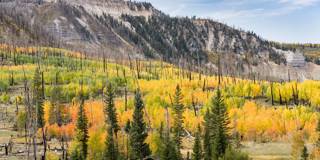With emissions rising and climate disasters growing worse even as financing continues to flow toward fossil fuels, it is understandable that many people have become fatalistic, cynical, or despairing. But even if this shared story feels justified, that does not make it practical – or even true.
SAN JOSÉ – We are already a third of the way into the decisive decade for bending the curve on greenhouse-gas emissions and biodiversity loss. Scientific warnings about the irreversible planetary changes that we are causing are growing clearer and more certain. Yet emissions continue to rise, and vast sums of money are still flowing toward investments that will expand fossil-fuel production and drive mass deforestation.
The gap between the urgency of the science and the dilatory policy response is so stark that no policy or technological breakthrough would be “enough.” But every fraction of a degree of warming we can ameliorate and every inch of nature we can protect is crucial.
The past year has been tough. Pakistan and India endured a nightmarish and deadly heatwave in which temperatures in heavily populated areas approached 50° Celsius (122° Fahrenheit). While massive floods destroyed lives and livelihoods across Asia and Africa, major rivers in Europe ran dry. In December 2022, a winter storm as big as a continent thrashed North America just when many were traveling for the holidays.

SAN JOSÉ – We are already a third of the way into the decisive decade for bending the curve on greenhouse-gas emissions and biodiversity loss. Scientific warnings about the irreversible planetary changes that we are causing are growing clearer and more certain. Yet emissions continue to rise, and vast sums of money are still flowing toward investments that will expand fossil-fuel production and drive mass deforestation.
The gap between the urgency of the science and the dilatory policy response is so stark that no policy or technological breakthrough would be “enough.” But every fraction of a degree of warming we can ameliorate and every inch of nature we can protect is crucial.
The past year has been tough. Pakistan and India endured a nightmarish and deadly heatwave in which temperatures in heavily populated areas approached 50° Celsius (122° Fahrenheit). While massive floods destroyed lives and livelihoods across Asia and Africa, major rivers in Europe ran dry. In December 2022, a winter storm as big as a continent thrashed North America just when many were traveling for the holidays.